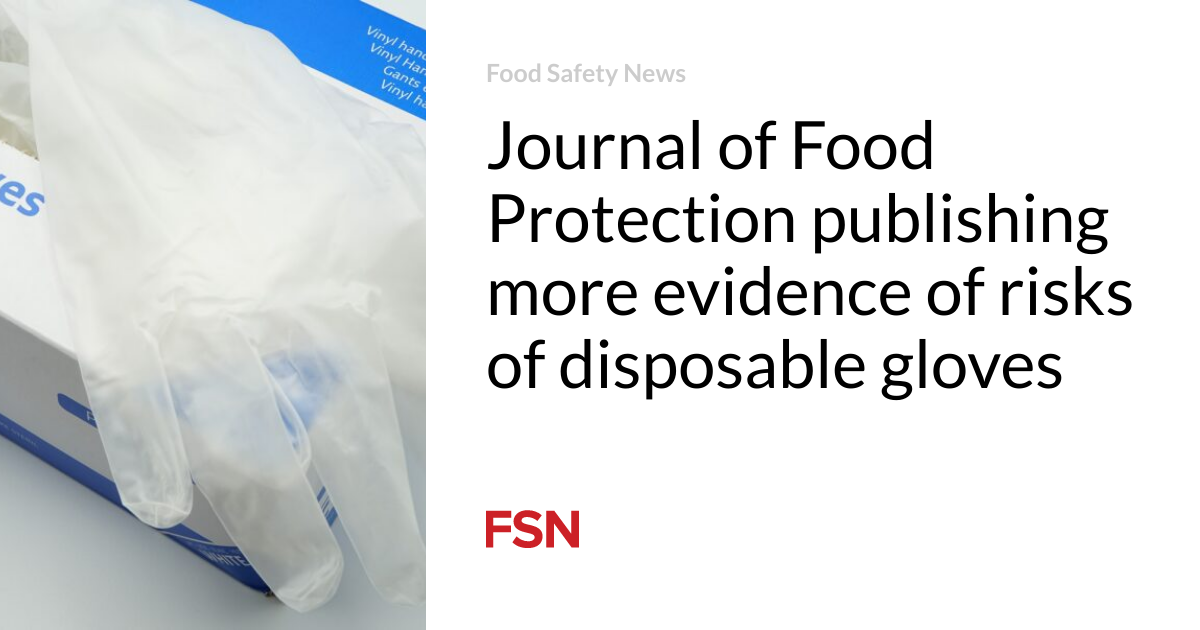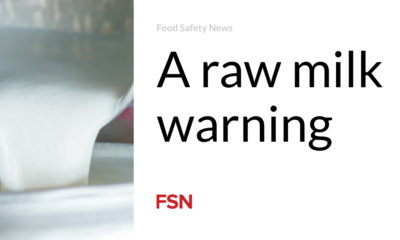Food
Journal of Food Protection publishes more evidence of the risks of disposable gloves

The food safety risks of disposable gloves are discussed in the July 2024 issue of the International Association of Food Protection Journal for Food Protection.
The journal highlights scientific reports on hazardous chemical and pathogenic contamination of gloves with the potential to contaminate food. It illustrates how new and unused disposable gloves, even if they meet FDA compliance standards, can be sources of contamination.
Gloves are essential food safety equipment used by millions of people every day. Yet glove contamination is a huge blind spot in public health, and this publication shows that great attention needs to be paid to this.
The Journal article highlights that glove production is loosely regulated, with inadequate quality controls or verification of product quality, safety and performance standards. This can result in cheap and unsanitary conditions in glove production and the use of cheap and unsafe chemicals.
In collaboration with Eagle Protect, the analysis from B. Michaels Group microbiologists highlights the need for more stringent glove testing and validation to ensure gloves meet the highest safety standards before use. It emphasizes the importance of including strict glove safety measures in the HACCP and FSMA programs to prevent contamination incidents.
Human fecal indicator organisms, strains of Bacillus cereus and B. anthracis, as well as other known pathogens, including Listeria monocytogenes, Clostridioides difficile, Staphylococcus aureus, Pseudomonas aeruginosa, and Streptococcus pneumoniae, were isolated from new and unused disposable gloves; 2,800 gloves from 26 different glove brands were tested. Hazardous glove chemicals have also been found, including per- and polyfluoroalkyl substances (PFAS), phthalates and bisphenol A (BPA).
Key quotes from the Journal article include:
“. . . gloves have been identified as sources of potentially toxic, poisonous and harmful chemicals that can leach into food and cause skin problems via solubilization of glove chemicals in gloves via sweat; And
“Because they (gloves) are treated as simple consumables by food industry purchasing personnel, there is a lack of validation or verification of safe and acceptable performance, which should be a prerequisite for program elements in accordance with HACCP and FSMA principles”
The assessment focuses on the potential direct physical, chemical and microbiological contamination of disposable gloves when used in food environments, including the risks to food products and worker safety. Unrecognized issues inherent in glove manufacturing have been magnified during the COVID-19 pandemic due to high demand, increased attention to PPE performance, availability, supply chain instability and labor shortages .
Multiple evidence-based reports on contamination, toxicity, illness, deaths, and related regulatory actions associated with contaminated gloves in food and healthcare have identified issues that point to systemic deficiencies of the glove industry. The glove manufacturing process was diagrammed, identifying sources and routes of contamination, highlighting weaknesses and detailing documented occurrences.
Numerous unsafe ingredients can introduce chemical contaminants, potentially posing risks to food and glove users. Microbial hazards pose significant challenges to overall glove safety as contaminants appear to be introduced through contaminated water sources or flawed glove manufacturing processes, resulting in increased risks in the food and healthcare environment. Honest and opportunistic pathogens and organisms that can cause food spoilage can be introduced into foods and carriers.
When the sources and routes of glove contamination were examined, it was found that physical failure plays a critical role in the release of sweat deposits, liquefaction of chemical residues, and the incubation of microbial contaminants from hands and gloves. Therefore, where problems occur with the physical integrity of gloves, including punctures in new, unused gloves, which can develop into significant tears and tears, not only can direct physical food contamination occur, but chemical and microbiological contamination can also find its way into food .
Improved regulatory requirements for acceptable quality limits of food-grade gloves and establishing appropriate bioburden standards would improve safety in food applications. The unquestioning belief in the chemical and microbiological purity of gloves may be unfounded based on the information provided and a false sense of security associated with the use of gloves.
The full report, Potential for Glove Risk Amplification via Direct Physical, Chemical, and Microbiological Contamination by Barry S. Michaels et al. in Journal of Food Protection 87.7 (2024), available at https://doi.org/10.1016/j.jfp.2024.100283
(To sign up for a free subscription to Food Safety News, Click here.)

![[B-SIDE Podcast] The risks of using e-cigarettes and tobacco products, especially among young people](https://blogaid.org/wp-content/uploads/2024/07/B-SIDE-Podcast-The-risks-of-using-e-cigarettes-and-tobacco-products-300x240.jpg)
![[B-SIDE Podcast] The risks of using e-cigarettes and tobacco products, especially among young people](https://blogaid.org/wp-content/uploads/2024/07/B-SIDE-Podcast-The-risks-of-using-e-cigarettes-and-tobacco-products-80x80.jpg)










